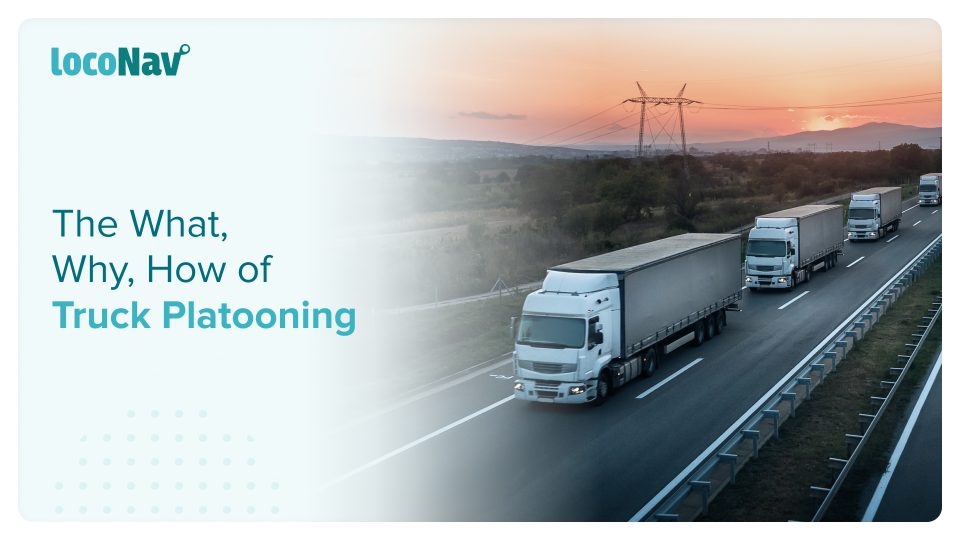

If you watch the Tour de France, you will undoubtedly notice large groups of riders moving in a line. The sight of 15 bikes lining up one after the other is perhaps perplexing to the average onlooker. The benefits of “drafting” are quickly seen when employing the science of aerodynamics, and it is acknowledged that this drafting line is a crucial aspect of winning the Tour de France. Surprisingly, technology firms want to use aerodynamics for something considerably bigger: truck platooning.
What does Platooning Mean in Trucking?
Through networking technologies and automated driving support systems, truck platooning allows two or more trucks to drive in convoys together. When connected during particular stages of a journey, such as on highways, these vehicles autonomously maintain a predefined, tight distance between each other. The trucks might be as close as 12 meters apart.
The truck in the front of the platoon acts as the leader, with the trucks behind reacting and adapting to changes in its movement – with little to no activity required from drivers. Drivers will initially retain control at all times, allowing them to leave the platoon and drive individually.
Manage your fleet efficiently with LocoNav’s Fleet Management Solutions!
How Does Truck Platooning Work?
To respond swiftly to circumstances, each vehicle in the platoon is equipped with radar, camera, and GPS equipment. The lead truck is controlled by a person, while the following trucks will be totally driverless in the future. The behaviors of the lead driver will cause automated vehicles to adapt and react.
Human drivers still watch the road and respond to traffic today, but in a platoon, their feet will be off the pedals. Platooning has many advantages, including lower total cost of ownership and assisting fleets in meeting their sustainability goals. Let us look at a few examples.
What are the Benefits of Adopting Platooning in a Fleet Business?
Truck platooning has the potential to make future road transportation safer, cleaner, and more efficient. As a result, many stakeholders, particularly trucking manufacturers, fleet operators, academic institutions, and government agencies, recognize the value of perfecting platooning methods and have been testing this technology on the highways.
- Reduced Fuel Costs
Commercial fleets could lower fuel consumption by 4 to 5% for the lead vehicle and up to 10% for the second truck via truck platooning technology. With fuel expenses accounting for the bulk of a fleet’s total operating expenditures, there is more money available to address other business objectives. Platooning also helps to improve fuel management programs and lowers transportation expenses.
- Safer Driving
Human error may currently be at the root of the majority of traffic accidents. We have more tools to encourage safer roads for everyone as automation and V2V technology advance. With trucks transporting loads of cargo, reducing congestion and increasing traffic flow contributes to safer and more efficient highways.
Because trucks use drafting while platooning, they make greater use of the space on our highways. Additionally, the strategy reduces tailbacks.
What Factors Influence Platooning?
Platooning is influenced by factors such as anticipated maintenance concerns, bad weather conditions, and low overall technology adoption among key industry players. They are as follows:
- Every vehicle in a platoon should follow the same preventative maintenance program. Vehicle reaction time can be affected by factors such as brake wear and fluid levels.
- Heavy rain or snow makes it difficult to predict how brakes would react, which has an impact on platooning.
- The truck platooning system must be compatible with multiple truck models. Some OEMs may be less eager to invest in new technology, lowering total fleet efficiency potential.
What does the Future Hold for Platooning for Truck Drivers?
As appealing as the concept of truck platooning is, the path to full commercialization is riddled with difficulties, including garnering general public support, reducing disturbances to normal traffic flows, and harmonizing a patchwork of local and national regulatory norms and regulations.
For long-haul truck platooning to become a practical reality, additional states must enact legislation authorizing the technology’s adoption and use on public roadways. Otherwise, if constrained within state boundaries with discontinuous borders, platooning will be neither viable nor economically feasible.
Overall, while truck platooning has significant advantages, the technology still has a long way to go before it can achieve its full potential.